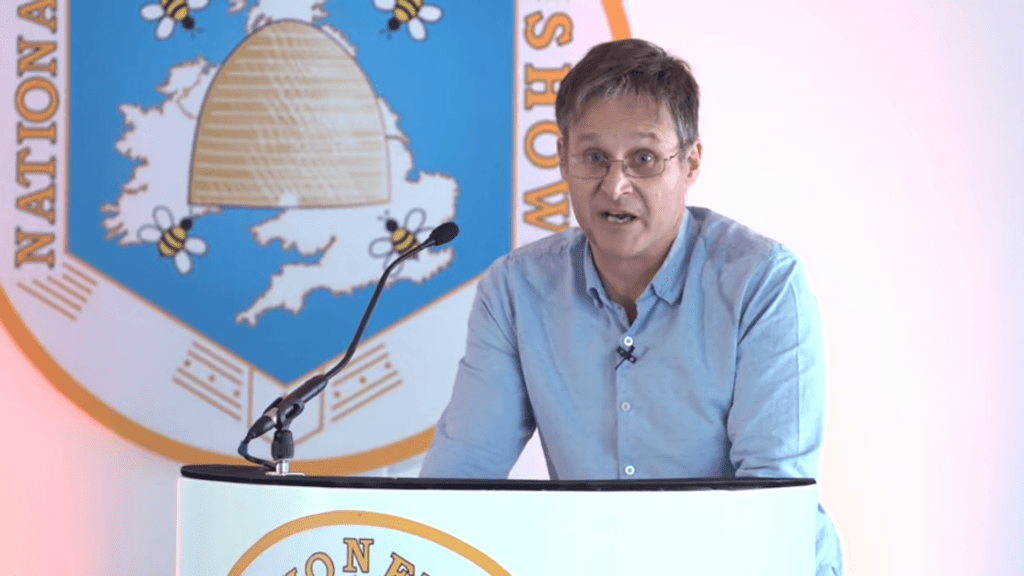In the ever-evolving field of apiculture, the significance of genetics in the management and preservation of honey bee populations cannot be overstated. At the forefront of this discussion is a lecture delivered by John Chambers at the National Honey Show. ” “Basic Honey Bee Genetics for Beekeepers,” which illuminated the complex genetic landscape of honey bees.

This post explores the key aspects of Chambers’ discussion, providing both beekeepers and enthusiasts with a detailed overview of the genetic principles that are fundamental to the health, behaviour, and productivity of honey bee colonies.
Honey bee genetics are far more complex than the simple genetics lessons we learn in school. John Chambers introduced us to some very interesting ideas like quantitative trait loci, haplodiploidy, and genetic recombination. These complex terms help us understand why bees behave differently, why some are more resistant to diseases than others, and even why they have unique roles within their colonies.
Haplodiploidy: A Fascinating Genetic Twist
A key aspect of bee genetics is something called haplodiploidy. This means male bees, or drones, come from eggs that haven’t been fertilised and only have one set of chromosomes (haploid). Female bees, like workers and queens, come from fertilised eggs and have two sets of chromosomes (diploid). This unique system helps increase genetic diversity in the hive, which is essential for the colony’s health and social structure.
The Importance of Mixing Genes
Chambers talked about how important it is for a queen bee to mate with several drones. This mixing of genes makes the colony stronger by providing a genetic shield against environmental challenges, diseases, and pests. It’s like having a diverse team where each member brings a different skill to the table, making the team more capable of handling various situations.
The Dangers of Too Much Similarity and Too Much Difference
He also explained the downsides of inbreeding, where bees become too genetically similar, leading to weaker colonies that get sick easily. On the other hand, outbreeding, or mixing bees from very different genetic backgrounds, can mess up the adaptations bees have developed for their local environment. Chambers suggests finding a balance by breeding bees that maintain their genetic diversity but still fit well into their local surroundings.
Choosing the Right Traits Naturally
Chambers believes that less interference from humans, like not importing bees from far away or excessively breeding for specific traits, lets bees naturally choose the characteristics that work best for them. This natural selection process helps bees become more resilient and adaptable.
The Warning of Genetic Bottlenecks
He warned about genetic bottlenecks, where a significant event drastically reduces genetic diversity, making it harder for bees to cope with challenges. However, the bees’ ability to mix genes widely and their inherent diversity give hope for overcoming these bottlenecks.
Advice for Beekeepers
To conclude his lecture, Chambers offered practical advice for beekeepers. He emphasised the importance of allowing bees to mate naturally, avoiding importing queens from far away, and appreciating bees that are adapted to local conditions. These practices help keep bee colonies strong and healthy.
A Call to Action for Beekeepers
John Chambers’ lecture was a call to action for beekeepers to understand and embrace the complex genetics of honey bees. By valuing genetic diversity, beekeepers can ensure their colonies are healthy and vibrant, securing the future of beekeeping and the essential services bees provide to ecosystems and agriculture. Understanding bee genetics is not just for scientists—it’s crucial for anyone interested in the well-being and future of beekeeping.

